My problem is that I need to generate a PNG image with a transparent background fixed to x * x pixels.
I find that whatever I do with EncodeHintType.MARGIN, these is always some unexpected margin.
After reading its source code, I find a way to fix my problem, this is my code. There is no margin in the output BufferedImage.
BufferedImage oriQrImg = getQrImg(CONTENT_PREFIX+userInfo, ErrorCorrectionLevel.L,BLACK);
BufferedImage scaledImg = getScaledImg(oriQrImg,REQUIRED_QR_WIDTH,REQUIRED_QR_HEIGHT);
private static BufferedImage getQrImg(String content, ErrorCorrectionLevel level, int qrColor) throws WriterException {
QRCode qrCode = Encoder.encode(content, level, QR_HINTS);
ByteMatrix input = qrCode.getMatrix();
int w=input.getWidth(),h=input.getHeight();
BufferedImage qrImg = new BufferedImage(w, h, BufferedImage.TYPE_INT_RGB);
Graphics2D g2d = qrImg.createGraphics();
qrImg = g2d.getDeviceConfiguration().createCompatibleImage(w,h, Transparency.BITMASK);
g2d.dispose();
for (int y = 0; y < h; y++) {
for (int x = 0; x < w; x++) {
if (input.get(x,y) == 1) {
qrImg.setRGB(x, y, qrColor);
}else{
qrImg.setRGB(x, y, Transparency.BITMASK);
}
}
}
return qrImg;
}
static BufferedImage getScaledImg(BufferedImage oriImg,int aimWidth,int aimHeight){
Image scaled = oriImg.getScaledInstance(aimWidth,aimHeight,SCALE_DEFAULT);
Graphics2D g2d = new BufferedImage(aimWidth,aimHeight, BufferedImage.TYPE_INT_RGB).createGraphics();
BufferedImage scaledImg = g2d.getDeviceConfiguration().createCompatibleImage(aimWidth,aimHeight, Transparency.BITMASK);
g2d.dispose();
scaledImg.createGraphics().drawImage(scaled, 0, 0,null);
return scaledImg;
}
